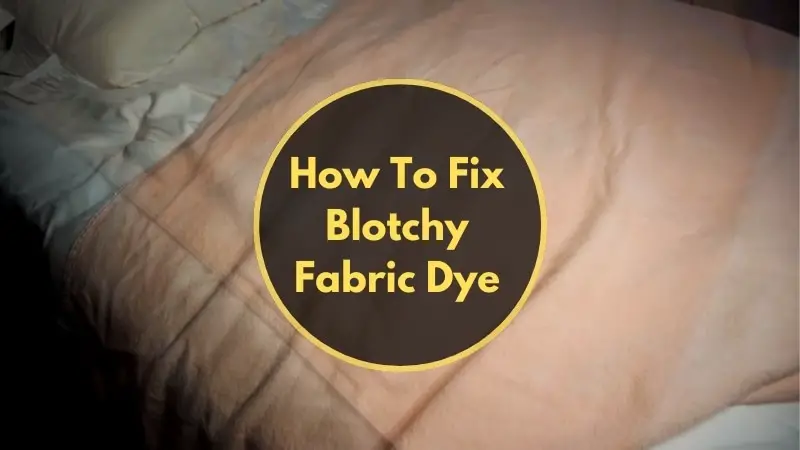How To Fix Blotchy Fabric Dye? Easy Fixes in A Few Steps!
Did you just put hours and hours of work and patience to get your fine piece of clothing dyed? But unfortunately, you ended up with blotchy fabric dye, exactly the opposite of what you wanted! No need to panic; there’s a solution to every problem.
So, how to fix blotchy fabric dye? While it may seem like a mess when you first get a glimpse of it, fixing it may not be that hard.
You can use either dye fixatives, bleach, dye remover, overdye, or re-dye the whole thing based on your preferences.
But to do so, you need to be aware of the instructions, rules, and steps for whatever solution you pick. And that’s why today we are here to help you with it and more. Binge on!
Why Does a Dyed Fabric Become Blotchy or Uneven
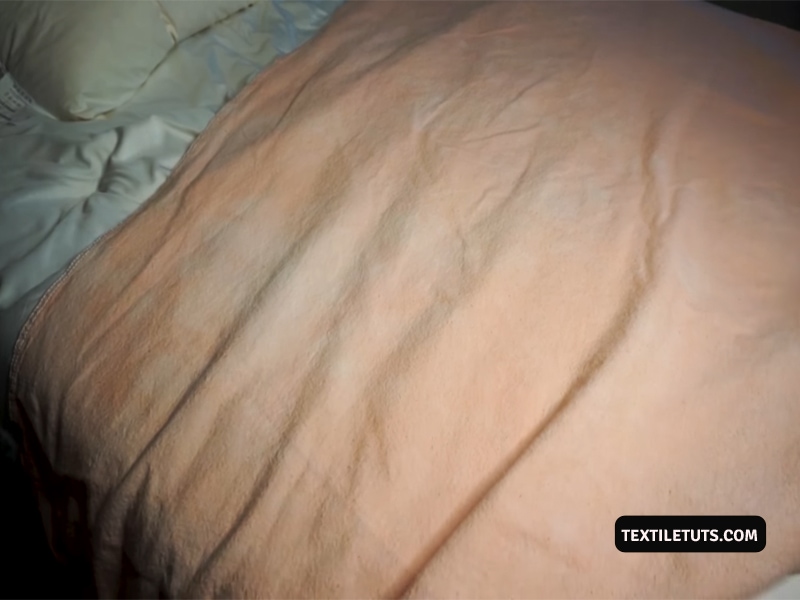
Even after being completely cautious when dyeing fabric, when the final result is a blotchy and unevenly dyed fabric, it can be pretty frustrating. So, before jumping into the solutions, let’s show you the reasons behind it just to be careful next time!
Dyeing Unevenly
Of course, the main evil behind blotchy fabric dye patches is inappropriate or uneven dyeing. So, what causes uneven dyeing?
Fabric Residue
Another major reason for uneven or blotchy fabric is unevenly prepared fabric. A couple of mistakes or issues lead to the uneven fabric. For instance,
Unsatisfactory Water Quality
This might be a surprise, but the water quality, hardness, and temperature are also responsible for blotchy patches on your fabric. The following water condition issues have a clear impact on your fabric dye-
Piled-up Fabric in the Solution
When you are working with more than one piece of garment, and you somehow end up overcrowding the dye bath or piling up too much cloth in it, the results will never be as expected. Stacking up clothes on one another must result in blotchy spots because the color doesn’t spread out evenly.
Substandard Dye Solution
Besides, blotchy fabric dye is also the result if you don’t make the dye solution as instructed or there are some issues with it, like
Insufficient Dye Fixative
When you’re not careful about using the recommended dye fixative as instructed in the dye manual, there’s every possibility that it will either cause blotchy patches, fade away, or bleed out.
Apart from these probable reasons, your messed blotchy dyed fabric may be the result of defective machinery and tools used for dyeing fabric or not sticking to the given instructions for dyeing, etc.
Quick Rules for Over-Dyeing Blotchy Dyed Fabric
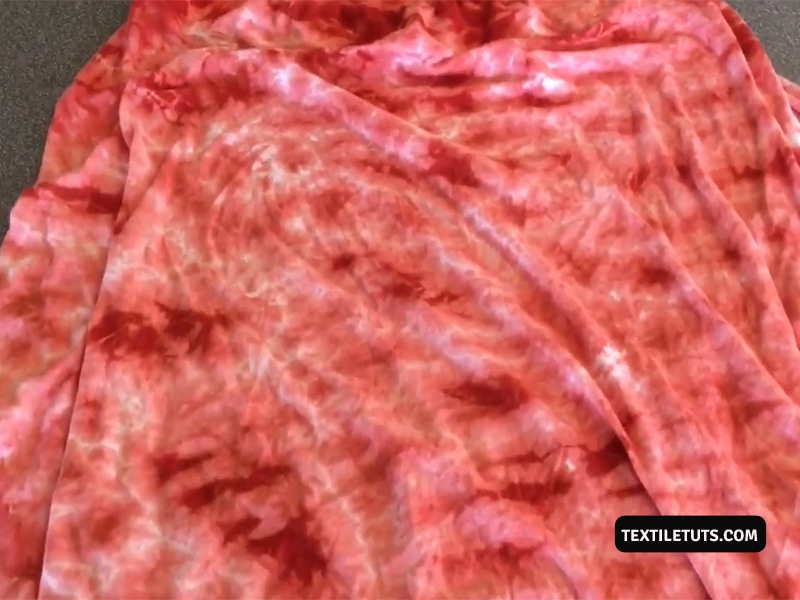
So, instead of a beautifully colored fabric, you are left with color spots and patches on it. What’s the easiest and safest way to fix it? Of course, give it another shot at dyeing or simply over-dyeing it!
Yes, it surely is a quick and easy fix to bring back your clothes to use. But before you do that, be mindful of some simple rules for over-dyeing it.
Cleaning Fabric Residues
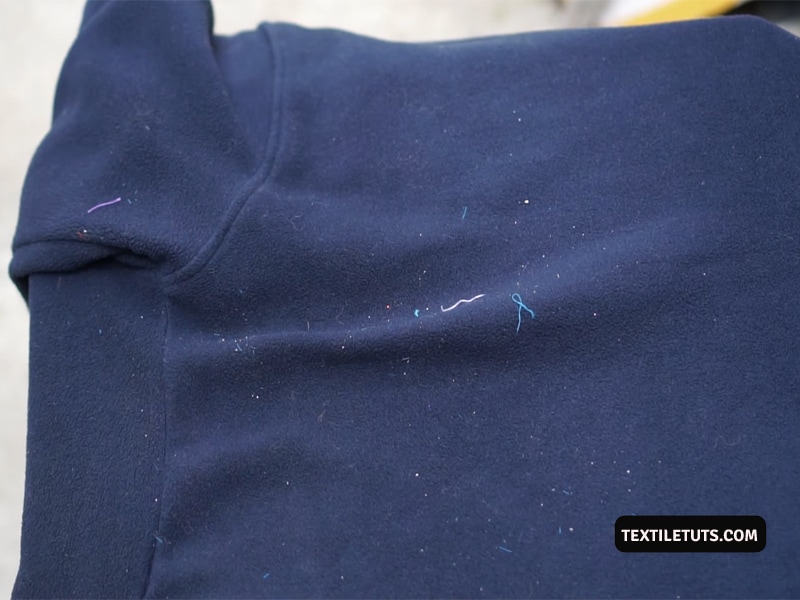
Before every other step, the most important one is to make sure the piece of fabric is free of any insoluble materials, residues, and dirt. Any sort of residual chemicals will come in the way of smoothly over-dyeing the fabric.
Picking the Right Dye
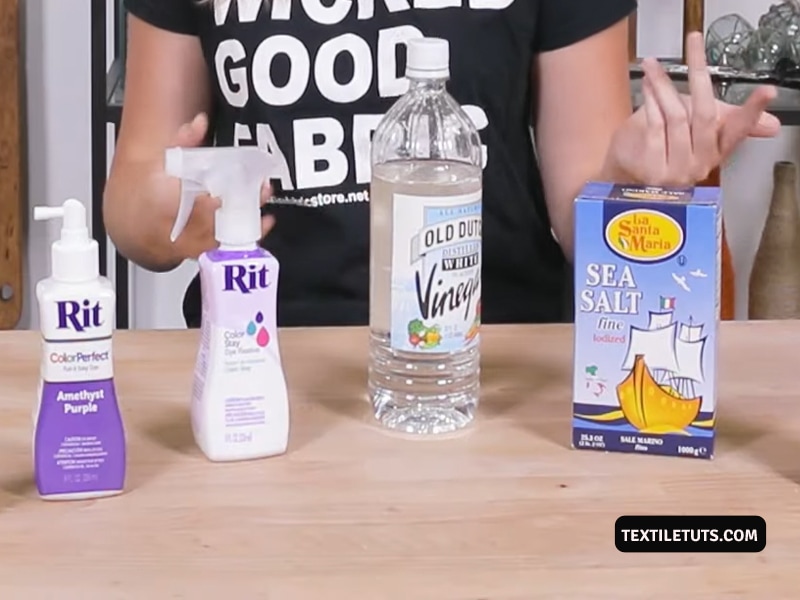
The secret to uniform distribution of colors over the fabric depends on choosing the right tools and materials for dyeing or even overdyeing. When you are attempting to overdye the already unevenly dyed fabric, make sure you use the right dye suitable for the work.
Otherwise, you’ll end up with an even worse blotchiness effect on the clothes!
Correct Dye Mixing
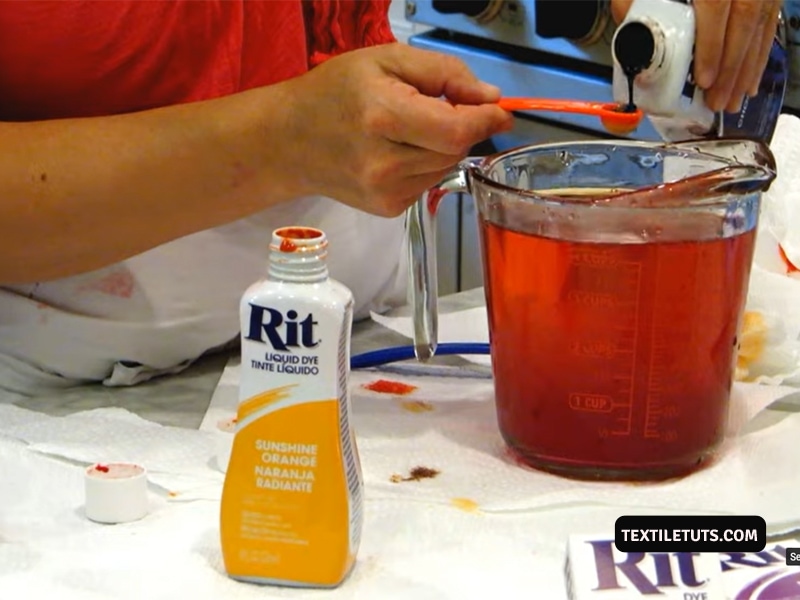
Whether you are dyeing a bleached or white fabric or over-dyeing it, you must mix the dye in the water in the correct ratios to get even colors. And you know what happens as you use a badly blended dye for your fabric!
Using Darker Colors
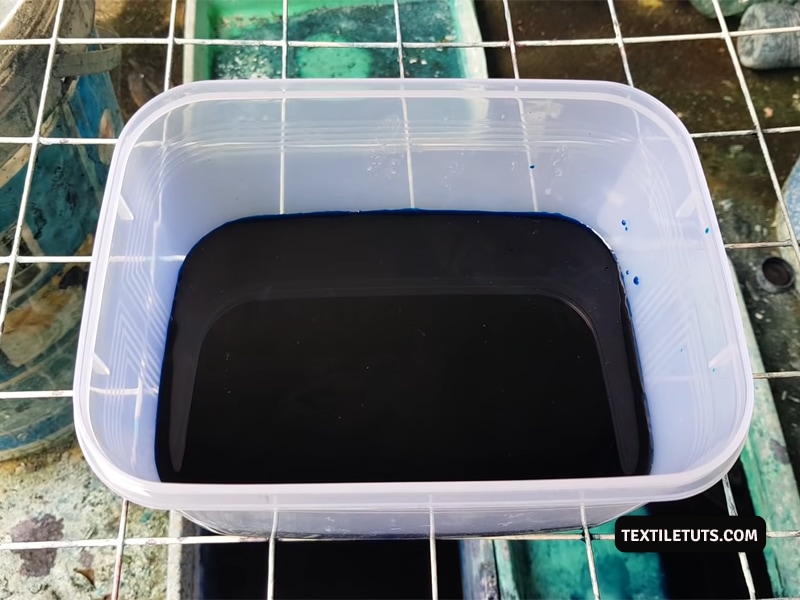
After your dyed fabric comes out with tacky color blotches, you need to remember that if you want to overdye it, you must go with darker colors. You can try more saturated colors or dyes with more hue and bolder colors, but never lighter or pastel colors!
Testing the Dye Beforehand
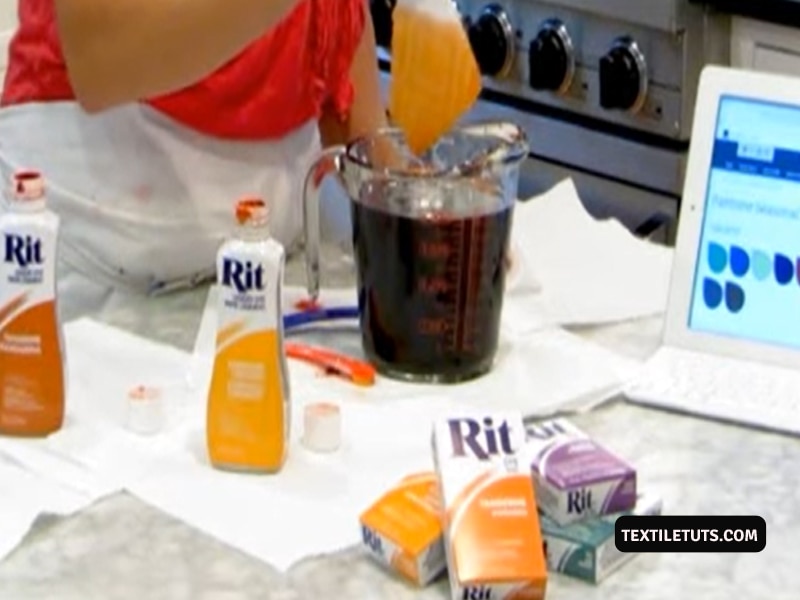
Before you submerge the final fabric for dyeing, test out the colors or dye bath on a scrap piece of fabric. This is just a safety step for not messing with the dye, once again!
Using a Properly Sized Dye Bath Container
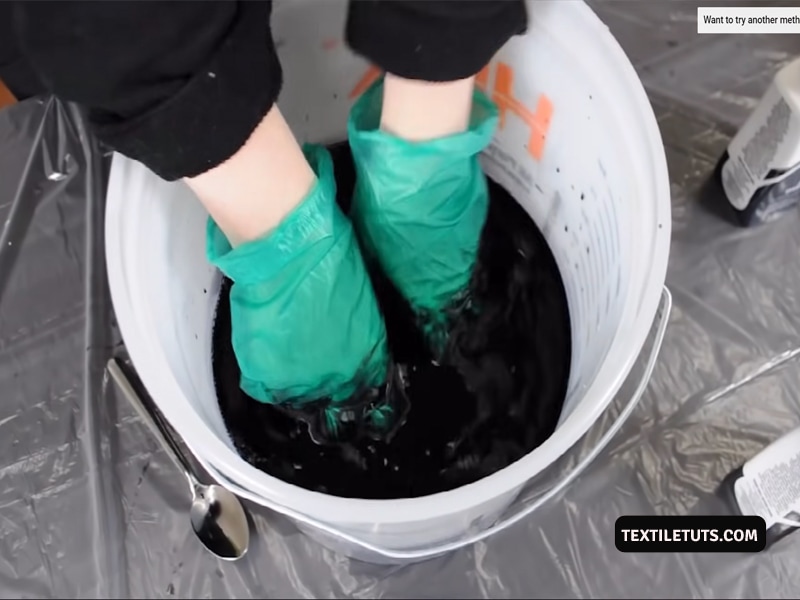
Don’t forget to mix the dye solution in a larger dyeing container and submerge your fabric in that. This allows the fabric to move around freely with more space, minimizing the chances of blotches and patches of colors.
Follow Recommended Dyeing Time
Finally, keep a watch on the clock as you over-dye the blotched fabric. Keeping it in the dye bath for a longer or shorter period will mess with the dye absorption and distribution, simply worsening the blotchiness!
Easy Steps to Fix Blotchy Fabric Dye
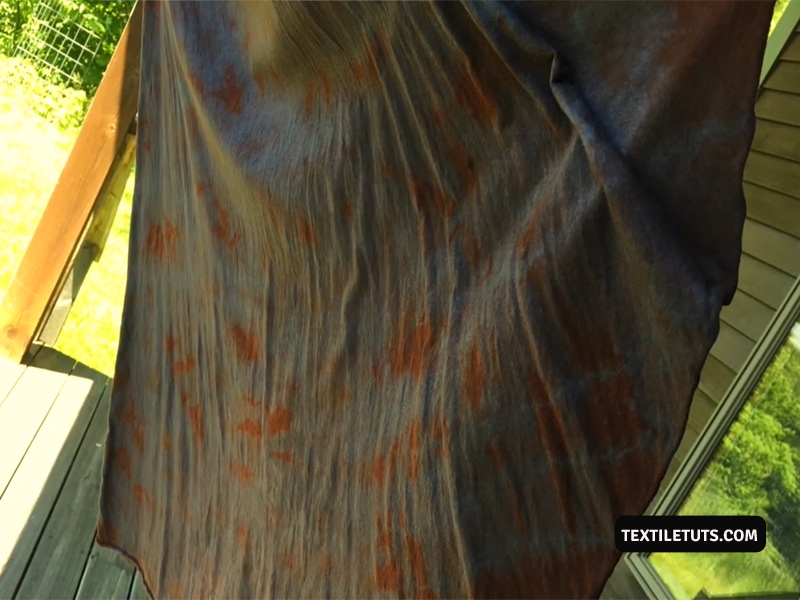
Now, time for the important segment you’ve been waiting around for, the fixes. When you already have a messed up, unevenly dyed fabric at hand, your next step is to think of solutions.
To attempt to fix the blotched fabric dye, you have 3 options to choose from,
Steps for Using Commercial Dye Fixatives
Steps for Using Natural Dye Fixatives
Take a large bucket and fill it with water and lemon juice/ vinegar in a ratio of 3:1. Immerse the fabric in it.
Keep the cloth in the mixture all night. Vinegar or lemon juice has the properties to lock in residual color while getting rid of the extra dyes.
After the overnight soaking, you need to rinse out the fabric under running water from the sink. And as well, follow the care guidelines as per the manual for the dye, and you’re done!
Steps for Re-Dyeing
If the dye fixatives are not being of much help, your last resort is to re-dye the whole fabric.
To do so, you’ll need,
Procedure
To begin with, take your huge container or bucket and fill it with water and add soda ash to it. Don’t forget to check the dilution instruction given by the manufacturer!
Now, bring out the blotched fabric and soak it in the mixture for the whole night. What happens here is that the soda ash prepares the cloth for readily absorbing the color in a uniform distribution.
After that, take out the cloth from the mixture and give it a good wash and dry out to the point it’s not dripping water but dampened.
Time to make your dye batch. After you’ve made it following the given instructions using the right dye, immerse the moist cloth in the dye.
Keep the cloth submerged for as long as instructed to set in the colors.
When this step is done, give the cloth a thorough wash in the washing machine. Use half a cup of salt and color-protective detergent to seal in the fabric dye. Dry it completely, and this should get your fabric all fixed and pretty!
How to Prevent a Blotchy Fabric Dye: Tips for Even Dyeing!
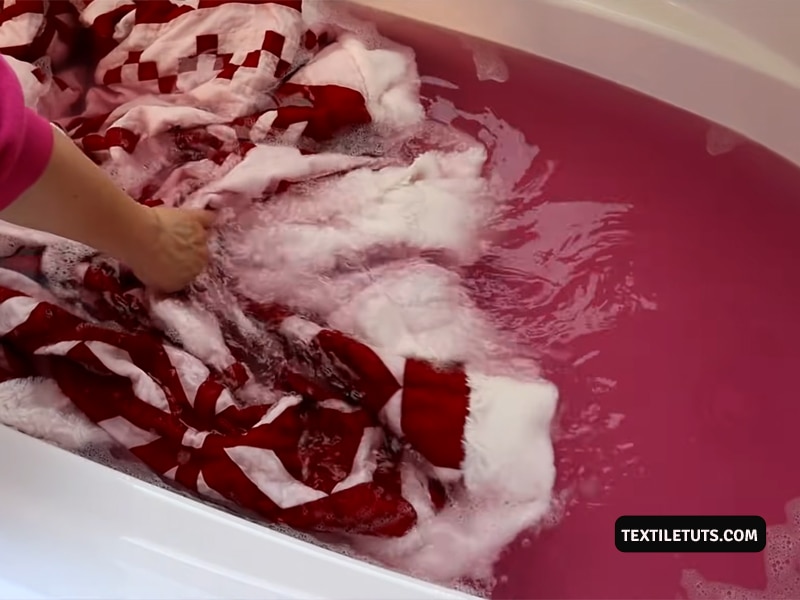
Why look for solutions when you can prevent the blotchy mess? To begin with, after all, prevention is better than cure! Although it can be pretty tricky sometimes to get completely even dyeing results, it’s not impossible.
All you need is to make sure the colors are distributed uniformly in the fabric. Here’s how,
Adequately Pre-Washing/ Preparing the Fabric
Before you start the dyeing process, you need to make sure you have a completely clean piece of fabric with no residues, chemicals, oils, or dirt.
In the case of thick fabric types, you can try out maximum heated machine washes or give it an abrasive wash. On the other hand, all you need for a lighter fabric is a thorough and gentle machine wash.
Not only an insufficient pre-wash will lead to color spots, but it may also result in the color fading away with a couple of washes.
Constant Stirring
Do you know what’s the smartest move and best trick to get evenly dyed cloth? Lots and lots of stirring! After you put the fabric in the solution, you need to make sure the cloth is constantly moving around in it so the colors don’t get concentrated in one spot.
Now, of course, with a smaller fabric piece, it’s a lot easier to get even dyeing results. However, when it comes to huge fabrics, the safer option is to go for mild patterns or tie-dye techniques. Of course, intentional patterns on the cloth are better than being left with weird patchiness!
Setting the Correct Water Temperature
The right water condition and temperature are the keys to even abruption of the dye by the fabric. So, before setting the water for the dye batch, check the manufacturer guidelines for the water state and temperature.
Here’s a tip, you can easily perfect the temperature by using a thermometer!
Soya Milk Pretreatment
If you didn’t know about this, here’s a secret! You can use a soya milk treatment and apply it to the fabric before the actual dyeing process. This allows the fabric to absorb the colors better and evenly.
After you give it the soya milk treatment, make sure the cloth is not dripping the solution, or else you’ll be left with dripping stains you don’t want! Also, make sure to finely strain the cloth to get rid of any residues from the treatment.
Proper Fabric Dyeing Tips
As already mentioned, you need to give the dye bath in a large container to give it more space for accepting colors. Remember that even if the cloth piece isn’t as big but quite thick, you still need a big container for dye bathing.
Another useful tip for you, pre-wet the fabric a little before immersing it in the dye bath, as it helps in better absorption of the colors. Also, traditional squeezing and compressing the fabric is a good way to get rid of the excess water and air pockets. But don’t forget the gloves on your hands.
If you have to leave the dyeing cloth for some work, don’t leave it in the solution. Take it out, squeeze it nicely, get rid of the excess solution, hang it somewhere, and then leave. When you come back, you can start the process again!
Don’t let even parts of the cloth peek out of the water; otherwise, dark patches of colors are a must.
When you are dyeing clothes with zippers, buttons, and other accessories, there’s an easy possibility that patches of color will be created around them. So, what you need to do is unzip the zipper, remove the buttons, unfold the sleeves, etc.
Frequently Asked Questions
Can I use table salt for dyeing or re-dyeing fabric?
Yes, both cooking salts and standard table salts in the right proportion are fine and, in fact, the only salts you should be used for dyeing!
What is the standard time for soaking the fabric in dye baths?
Although the time limit depends on the color hue and fabric type, the average time is from 30 to 60 minutes. However, don’t forget to check the instruction manuals for it and keep on stirring the whole time.
What is the right temperature for water used to make the dye solution?
The water temperature for preparing the dye mixture depends on the fabric and dye type. Although there will probably be instructions for it on the dye manual, 140 degrees F and about 200 degrees F is the standard temperature for natural and synthetic fabric, respectively.
Wrapping Up!
Now, you know how to fix blotchy fabric dye in the easiest ways. But, you know the smartest move is not to make that mistake, to begin with. And you can easily do that if you follow our guidelines, tips, and tricks for even dyeing with zero patchiness.
Here’s a trick, when you are making the bath solution, make sure you add more water to it to fill up the container so that the fabric piece cannot peek out of it. This allows the elimination of any air pockets in the fibers, so all you’re left with is even colors. That’s all for today, folks; keep making colorful clothes!

